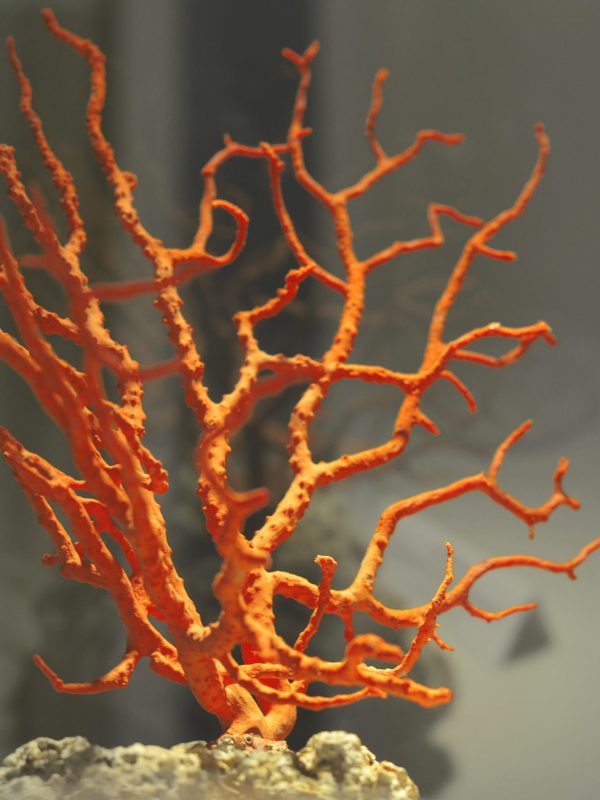« Animal kingdom or vegetable kingdom? »
Between myth and history
Blood-red, as vivid as a pulsating heart, the Greeks and Romans considered it the sea's greatest bounty. Coral was deemed to have medicinal properties and was included in the pharmacopoeia. A long-held pagan belief, claimed that coral jewels could protect from diseases and could drive away the devil.
From time to time its classification changed: vegetable mineral, precious plant, ornamental object, superstitious charm. The abundance of Corallium Rubrum in our sea and the chance for increased earnings earned this element its place as the symbol of our city.
The bond between Alghero and coral fishing and trade was sealed in 1355, when the king of Aragon, Peter IV (Peter the Ceremonious), granted the coat of arms to the Fortress City. Depicting a coral branch emerging from the waves to celebrate the fortified city's most precious resource, the crest also has the four red Bars of Aragon on a gold background, the coat of the Kings of Aragon.
While it has been slightly modified over time, its graphic, ideological and symbolic identity has remained relatively unchanged.


-
In 1355 the King of Aragon, Peter IV ‘the Ceremonious’, grants Alghero the municipal coat of arms, consisting of a horizontally-split shield with four red bars, the Bars of Aragon, in the upper part and a coral branch emerging from the waves in the lower part.
-
In 1414, a new quadripartite coat of arms appears, in which the Bars of Aragon appear in the first and fourth quadrants, while the second and third show a castle, topped by a crown, above the waves of the sea. Around it is written: "Segel de la Vila de l'Alguer".
-
In 1501 Ferdinand ‘the Catholic’ grants Alghero the title of royal city and the privilege of placing a royal crown above the coat of arms. In 1562 it became rhomboidal in shape. The royal crown is placed above the crest, and no longer appears on the castle. In 1573 the coat of arms was also framed in the St Andrew's Cross, a typical quadripartition of Catalan heraldry, carved into a marble plaque.
-
In 1613 a coat of arms is depicted in which the privileges granted to the municipality by the Catalan and Spanish sovereigns are transcribed. Below the castle door, an upside down coral branch is visible, sinking under the waves of the sea like a root, almost as if to indicate that the city derives its economic resources from coral fishing.
-
The Savoy cross at the top is replaced by the Bars to represent the city's Catalan roots and the silver field of the shield is changed to blue with reference to the colour of the sea surrounding the rock. The silver colouring of the coat of arms painted on the 1767 parchment preserved in the municipal archive has over time taken on a bluish gray tint, which was then mistakenly reproduced also in the emblem of the municipal banner.
-
In 1991 the coat of arms is composed of a shield between two palm fronds and topped by a crown with nine balls, a symbol of the royal city. In the lower part (2/3) of the shield, on a blue background, is a rock surmounted by a coral branch and in the upper part (1/3), on a yellow background, four red bars.
